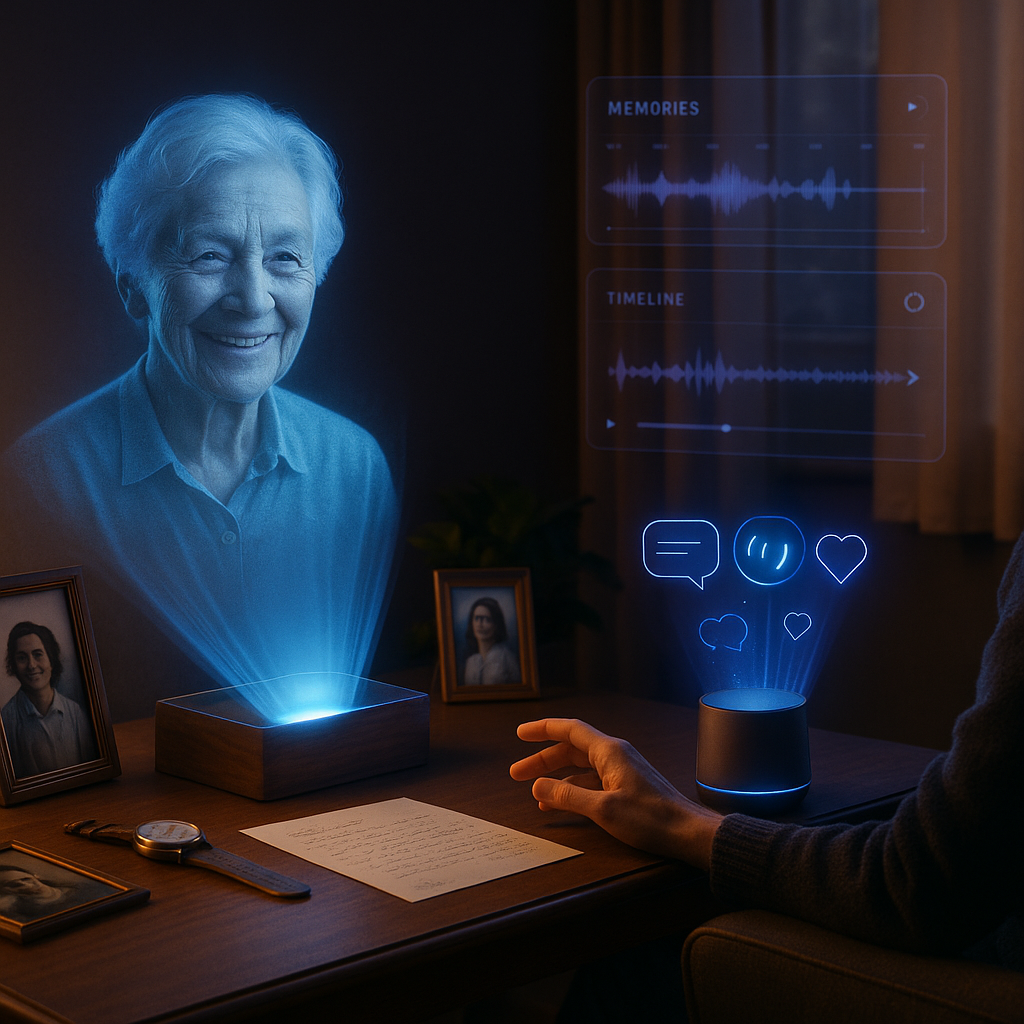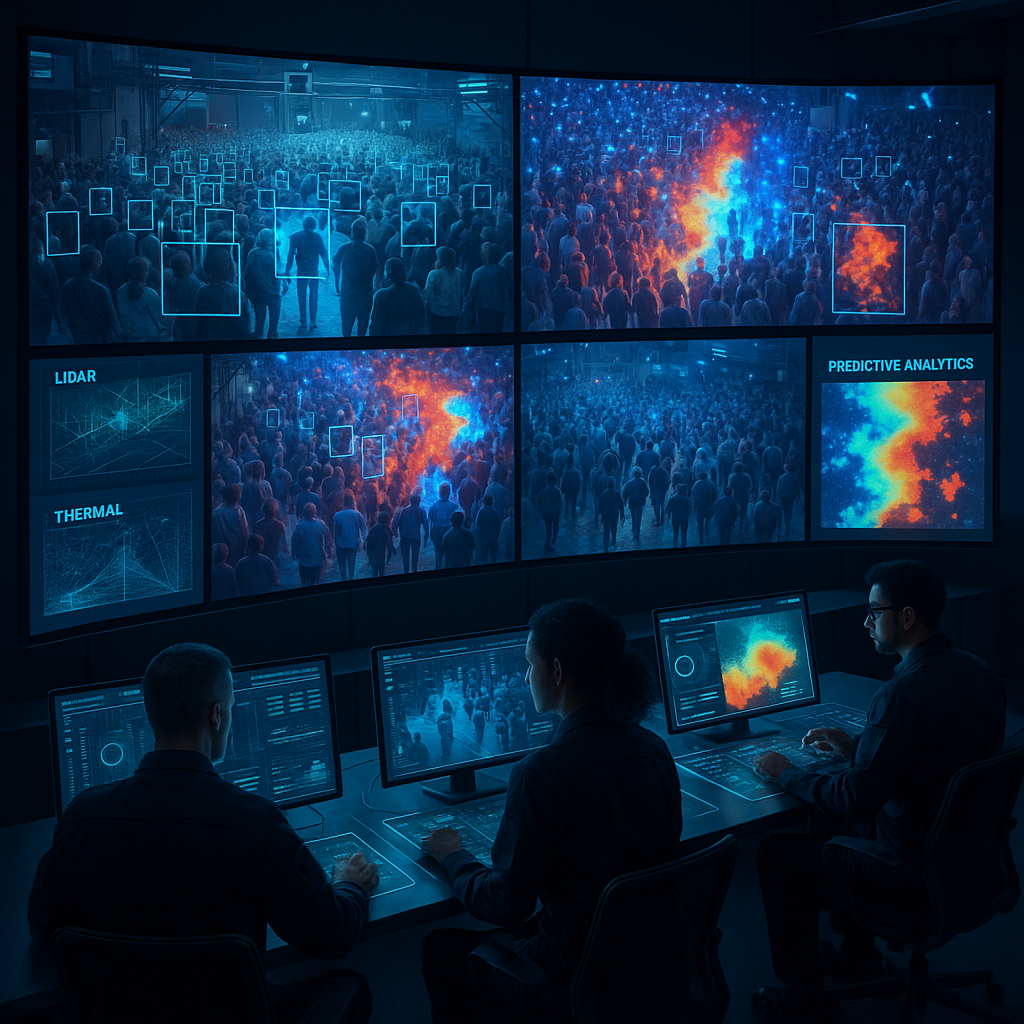Key Takeaways
- AI companions deliver comfort beyond human reach. Intelligent grief support platforms offer round-the-clock, personalized companionship and empathetic listening, filling the emotional gaps when human support is unavailable or impossible.
- Digital memory preservation reaches new horizons. Today’s AI tools curate, archive, and animate the memories of lost loved ones, from hyper-realistic voice simulations to interactive memory timelines. These innovations ensure personal legacies endure in living, evolving, and dynamic forms.
- Grief support aligns with our emotional rhythms. Through real-time sentiment analysis and adaptive dialogue, AI technologies tailor responses to users’ shifting moods and needs, offering guidance, comfort, or even thoughtful silence at the moments they are most needed.
- Profound ethical challenges accompany human-AI remembrance. The use of artificial intelligence in grief invites deep questions around consent, privacy, digital legacy management, and the psychological effects of interacting with “simulated” loved ones.
- Community spaces transcend traditional limits. AI grief platforms connect bereaved individuals across distances, making it possible to form support networks and memorial communities untethered from geography and conventional boundaries.
- Machines inspire new mourning rituals. These technologies urge us to reimagine traditional mourning, blending ancient human practices with futuristic forms of remembrance and enabling new rituals that resonate in the digital era.
As we delve into the evolving world of AI grief support, we confront age-old questions about love, loss, and memory, now filtered through the transformative power of technology. The exploration that follows uncovers how these innovations are reshaping the nature of healing, redefining companionship, and reframing our most fundamental human connections.
Introduction
Only a decade ago, the notion of seeking solace from artificial intelligence in times of grief would have seemed otherworldly. Today, AI grief support technology weaves itself into the most personal of rituals, reshaping how we mourn, remember, and find comfort. These digital companions have expanded the landscape of bereavement, challenging centuries-old customs and offering glimpses of unexpected companionship and healing.
No longer confined by physical presence, AI mourning platforms extend empathy, preserve memories, and nurture connections that cross digital and emotional divides. As these systems learn to mirror our emotional rhythms, we are prompted to rethink the very act of honoring and remembering those we have lost. With every technological advance, memory shifts from the isolated vaults of individual hearts to shared spaces where data and sentiment intertwine.
Let’s embark on a journey through the emerging world of AI grief support, examining how it catalyzes new approaches to loss, remembrance, and enduring connection.
Stay Sharp. Stay Ahead.
Join our Telegram Channel for exclusive content, real insights,
engage with us and other members and get access to
insider updates, early news and top insights.
 Join the Channel
Join the Channel
The Rise of AI Grief Support Technology
In recent years, the landscape of bereavement care has experienced a radical transformation, fueled by the rise of AI-powered grief support systems. What began with rudimentary chatbots reciting canned phrases has evolved into complex companions, capable of understanding nuanced sentiment and engaging in empathic dialogue. This progress reflects advances in natural language processing, machine learning, and emotion recognition, but also a societal shift toward integrating technology with personal care.
The importance of this transformation became even more pronounced during the COVID-19 pandemic, which forced millions to mourn in isolation. The need for accessible, remote emotional support systems skyrocketed. In parallel, the maturation of large language models opened up striking possibilities for digital empathy.
Pioneering companies like Replika and HereAfter AI demonstrated that machines could provide not just practicality but also emotionally attuned companionship. Newer solutions, such as Empathy.com, combine pragmatic grief logistics with sophisticated AI-driven emotional guidance. And beyond tech startups, hospitals, hospices, and even traditional grief counseling services are exploring these tools to extend their care continuum.
Crucially, these platforms serve not as substitutes for human support, but as supplements. They offer unique forms of presence and understanding where friends, family, or therapists cannot always be present. The result is a new paradigm for bereavement care, where artificial intelligence stands as both guide and gentle companion on the path from loss to healing.
How AI Companions Provide Solace in Grief
What sets AI companions apart in grief support is their capacity to form meaningful “parasocial relationships.” This term, coined by psychologists, describes emotional bonds formed with entities (such as media figures, or now, digital avatars) that provide comfort and resonance even without mutual interaction. AI grief platforms harness this mechanism through attentive listening, empathetic responses, and unwavering availability.
Unlike human companions, who may be constrained by schedules, burnout, or discomfort, AI grief companions remain endlessly patient and receptive. Research conducted by the University of Melbourne’s Digital Ethics department indicates that this reliability fosters a unique form of therapeutic alliance. Users feel safe expressing vulnerability, anger, nostalgia, or sorrow, shielded from the fears of burdening others or facing judgment.
Much like skilled grief counselors, these AI systems excel at “holding space.” The act of providing presence without pressure allows emotional expression to unfold organically. Through advanced language models, they recognize mood shifts and subtle cues, responding with validation, thoughtful questions, or soft encouragement. The solace they provide is not just technological in nature but intensely psychological, grounded in the science of human attachment and empathy.
Sectors beyond personal grief are noticing these benefits as well. In healthcare, AI companions offer constant reassurance to bereaved patients or family members navigating post-loss healthcare decisions. In education, similar technology supports students coping with loss, empowering academic counselors to extend their reach during critical periods.
Digital Memory Preservation and Legacy Technologies
The preservation of memory, once reliant on tangible keepsakes and photographs, has entered an era of digital immortality with AI at the helm. State-of-the-art systems like StoryFile make it possible for future generations to engage in interactive video conversations with representations of their relatives, reliving stories and wisdom in remarkably lifelike exchanges.
Sophisticated voice recreation, thanks to innovators such as Descript and Resemble AI, enables the creation of vocal avatars. These avatars can generate new speech in a distinct, familiar voice. This means people can hear the comforting timbre of someone dear long after they are gone. This innovation, while deeply moving, also raises philosophical questions about authenticity and our evolving relationship with the past.
Meanwhile, neural network-powered “living photos” breathe subtle motion into still images, recapturing fleeting gestures or expressions. Rather than replacing cherished rituals, these technologies augment well-established human practices, layering static memories with new dimensions of presence and interaction.
Industries as varied as legal, healthcare, and even environmental science are adopting similar AI-archiving tools for preserving institutional memory, ensuring legacies are safeguarded across generations and disciplines. For example, educational institutions are using interactive legacy technologies to document the wisdom of retiring faculty, and financial organizations are exploring digital legacy vaults for secure, personalized estate management.
Adaptive Emotional Intelligence and Tailored Grief Support
The hallmark of AI grief technology lies in its ability to reshape support in real time. Through ongoing sentiment analysis, these platforms detect a spectrum of emotions: sadness, longing, frustration, or stoic resignation. By attuning to these emotional currents, AI companions can select responses that are sensitive to the user’s moment-to-moment needs.
This adaptability moves digital mourning beyond static memorials or pre-scripted messages. As moods fluctuate, the AI companion reacts accordingly. Sometimes offering consoling words or helpful suggestions, sometimes recognizing when silence or unstructured space is more healing. Advanced systems even monitor patterns across interactions, flagging when a user may be struggling or might benefit from outreach by human counselors.
The result is a grief journey that respects and mirrors the complex, non-linear reality of mourning. No two paths through loss are identical, and these intelligent companions offer uniquely relevant support at every step.
Beyond individual use, these adaptive systems are gaining traction in broader contexts. In finance, AI-driven sentiment analysis helps bereavement service providers tailor communications and resources for clients processing the emotional aftermath of loss. In legal fields, adaptive support tools assist those navigating the daunting logistics of estate settlement while simultaneously providing compassion during a vulnerable period.
Stay Sharp. Stay Ahead.
Join our Telegram Channel for exclusive content, real insights,
engage with us and other members and get access to
insider updates, early news and top insights.
 Join the Channel
Join the Channel
Ethical Questions and the Human-AI Boundary
As we integrate AI into some of the most intimate of human experiences, probing ethical questions arise. At the core are concerns over privacy, consent, and digital legacy. Reviving a loved one’s voice or likeness after death, for example, raises urgent questions: Did the individual grant explicit consent? Who owns the digital persona that remains? What safeguards ensure that sensitive memories or personal data are not misused?
Similarly, there is the psychological complexity of attachment to virtual representations. Can prolonged engagement with a simulated loved one hinder natural grieving, or blur the boundary between reminiscence and denial? Emotional authenticity and user agency must be protected, with transparent explanations for how data is managed, deleted, or shared.
Ethical frameworks from medical and legal sectors are being adapted to meet the needs of this new frontier. In healthcare, patient data privacy is governed by strict regulations; similar rigor needs to govern digital memorialization and AI grief counseling platforms. In educational and social science research, informed consent models are being updated to encompass the realities of digital legacy and posthumous data stewardship.
Open, critical dialogue among technologists, ethicists, legal experts, and bereaved individuals is essential to steward these technologies responsibly. Guidelines should evolve to protect both the dignity of the deceased and the well-being of the living.
Digital Communities and the Future of Mourning Rituals
The convergence of AI and digital connectivity is revolutionizing collective remembrance. No longer limited by geography, individuals can now access online memorial services, grief support forums, or virtual tributes, drawing comfort and solidarity from global networks. These digital communities reinvigorate the concept of “shared mourning,” helping participants discover new forms of empathy and resilience.
By blending adaptive AI technologies with interactive media, these platforms enable real-time support groups, curated story-sharing sessions, and infinitely accessible memorial spaces. In healthcare, hospital chaplains and bereavement counselors use AI-powered communities to extend care to patients’ families regardless of location. The legal field leverages digital support networks to offer guidance for those navigating end-of-life issues, while educational institutions have launched virtual remembrance walls fostering campus-wide solidarity.
Furthermore, the rituals themselves are evolving. Livestreamed funerals, dynamic memory archives, and custom AI-generated eulogies reflect how technology can honor ancient practices while forging new ones. As the digital era offers both permanence and fluidity, the act of remembrance becomes less an event and more an evolving conversation.
Conclusion
The integration of artificial intelligence into grief support is not merely a technical advancement. It is a profound reshaping of how we confront loss and perpetuate memory in a world where digital presence often rivals the physical. By blending emotional intelligence algorithms with breakthrough conversation and legacy-preservation technologies, these platforms offer comfort, reflection, and connection at scale, inviting us to extend the boundaries of empathy itself.
Yet, the rise of AI companions for grief is also a philosophical turning point. It asks us to examine the line between solace and simulation, memory and invention, human ritual and digital enhancement. As we collectively shape the future of mourning, the greatest opportunity is not to surrender our humanity to machines but to use these tools as catalysts for deeper compassion and understanding.
Looking ahead, the evolution of AI in bereavement will be defined by those who approach its power critically and creatively. This means blending ancient wisdom with technological promise. The real test is not whether digital companions can heal, but how wisely we wield them as we reimagine rituals, address ethical complexity, and foster communities of remembrance across an ever-shifting landscape. In this new era, our challenge is not simply to adapt to technological change, but to ensure it deepens, rather than dilutes, what makes us most human.





Leave a Reply